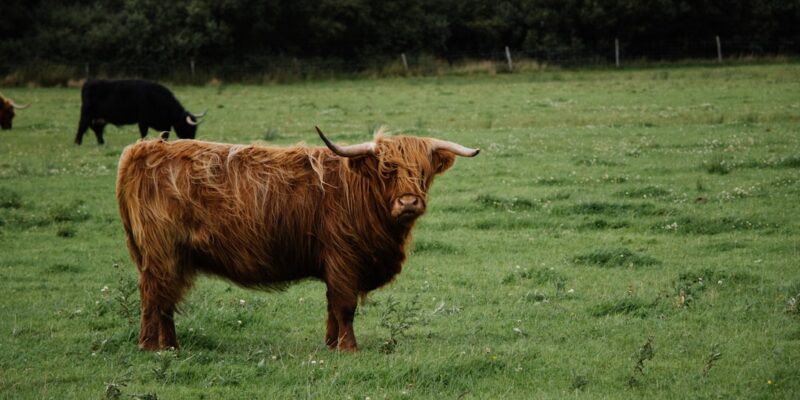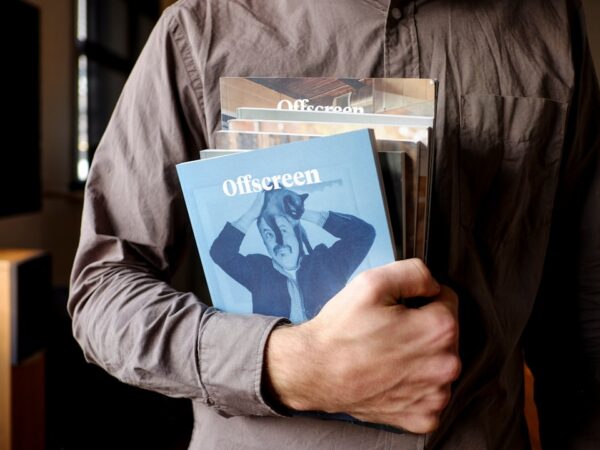
Diana Gabaldon’s Outlander Series: A Timeless Tale
Diana Gabaldon’s “Outlander” series has its roots in a unique blend of inspiration and circumstance that led to the creation of a literary phenomenon. The genesis of the series can be traced back to Gabaldon’s fascination with history, particularly the Jacobite risings in Scotland. In the late 1980s, while working on her Ph.D.
in ecology, she decided to write a novel as a creative exercise. The initial idea was sparked by a scene she envisioned involving a World War II nurse who accidentally travels back in time to 18th-century Scotland. This concept, which combined elements of historical fiction with romance and adventure, quickly evolved into a rich narrative that would captivate readers for decades.
Gabaldon’s meticulous research into Scottish history, culture, and the intricacies of time travel laid the groundwork for a story that would resonate with audiences around the world. As Gabaldon began to flesh out her characters and plotlines, she drew upon her own experiences and interests, infusing the narrative with authenticity and depth. The protagonist, Claire Randall, was inspired by Gabaldon’s own love for strong, independent women who defy societal norms.
Claire’s journey through time not only serves as a vehicle for exploring historical events but also allows for profound character development and emotional exploration. Gabaldon’s ability to weave together elements of romance, adventure, and historical detail has made “Outlander” a standout in the genre. The series was first published in 1991, and its success was immediate, leading to a series of sequels that would further expand the intricate world she had created.
The combination of Gabaldon’s unique vision and her dedication to research has resulted in a series that continues to thrive and evolve.
Key Takeaways
- Diana Gabaldon’s Outlander series was born from a writing exercise and a love for Scottish history and culture.
- Outlander’s timeless appeal lies in its blend of romance, adventure, and historical fiction, which continues to captivate readers across generations.
- The historical accuracy of Outlander is a result of extensive research and attention to detail, bringing the time-traveling tale to life with authenticity.
- The complex characters of Outlander are meticulously developed, offering depth and growth throughout the series, making them relatable and compelling to readers.
- At the heart of Outlander is a captivating love story that intertwines with the historical and adventurous elements, adding a romantic allure to the series.
The Timeless Appeal of Outlander: Why the Series Continues to Captivate Readers
A Masterful Blend of Genres
The enduring allure of “Outlander” can be attributed to its masterful blend of genres, which appeals to a wide range of readers. At its core, the series is a historical romance, but it also incorporates elements of fantasy, adventure, and even political intrigue. This multifaceted approach allows readers to immerse themselves in a richly textured world that feels both familiar and exotic.
Narrative Tension and Historical Context
The juxtaposition of Claire’s modern sensibilities with the stark realities of 18th-century Scotland creates a compelling narrative tension that keeps readers engaged. As they follow Claire’s journey through time, they are not only drawn into her personal struggles but also into the broader historical context that shapes her experiences.
Immersive Storytelling and Relatable Characters
Gabaldon’s writing style is another significant factor contributing to the series’ lasting appeal. Her prose is both lyrical and accessible, allowing readers to easily connect with the characters and their emotions. The vivid descriptions of the Scottish landscape, combined with the intricate details of daily life in the past, transport readers to another time and place. This immersive quality is further enhanced by Gabaldon’s ability to create relatable characters who grapple with universal themes such as love, loss, and identity.
Timeless Relevance and Emotional Resonance
As readers witness Claire’s evolution from a World War II nurse to a resilient woman navigating the complexities of life in the 18th century, they find themselves reflecting on their own journeys. This deep emotional resonance ensures that “Outlander” remains relevant and captivating for new generations of readers.
The Historical Accuracy of Outlander: Exploring the Research Behind the Time-Traveling Tale

One of the hallmarks of “Outlander” is its commitment to historical accuracy, which sets it apart from many other works in the genre. Diana Gabaldon undertook extensive research to ensure that the events, customs, and cultural nuances depicted in her novels were as authentic as possible. From studying historical texts to consulting experts on Scottish history, Gabaldon meticulously crafted a narrative that not only entertains but also educates readers about a pivotal period in Scotland’s past.
The Jacobite risings, which serve as a backdrop for much of the series, are portrayed with a level of detail that reflects Gabaldon’s dedication to authenticity. This commitment to historical fidelity enriches the reading experience and invites readers to engage with history in a meaningful way. Gabaldon’s research extends beyond mere facts; she delves into the social dynamics and everyday life of 18th-century Scotland.
By incorporating elements such as traditional Scottish customs, language, and even medicinal practices of the time, she creates a vivid tapestry that brings her characters’ experiences to life. This attention to detail not only enhances the narrative but also fosters a deeper understanding of the historical context in which Claire finds herself. Readers are not just passive observers; they are invited to explore the complexities of life during this tumultuous period alongside Claire and Jamie Fraser.
As a result, “Outlander” serves as both an engaging story and a valuable resource for those interested in Scottish history, making it a unique contribution to the literary landscape.
The Complex Characters of Outlander: Analyzing the Depth and Development of the Series’ Protagonists
| Character | Depth | Development |
|---|---|---|
| Claire Fraser | Complex and multi-dimensional | Evolution from a WWII nurse to a strong, independent woman adapting to 18th century Scotland |
| Jamie Fraser | Conflicted and layered | Growth from a young, naive warrior to a mature and wise leader |
| Frank Randall | Complicated and enigmatic | Revealing of his true nature and motivations over time |
| Black Jack Randall | Dark and tormented | Exploration of his twisted psyche and the events that shaped him |
At the heart of “Outlander” lies a cast of complex characters whose development is intricately woven into the fabric of the narrative. Claire Randall stands out as a particularly compelling protagonist; her journey is marked by resilience and adaptability as she navigates the challenges posed by her time-traveling predicament. Initially introduced as a strong-willed nurse from the 1940s, Claire’s character evolves significantly throughout the series as she confronts the harsh realities of 18th-century Scotland.
Her relationships with other characters, particularly Jamie Fraser, serve as catalysts for her growth, forcing her to reconcile her modern values with the expectations of her new environment. This internal conflict adds layers to her character, making her relatable and multifaceted. Jamie Fraser is another pivotal character whose depth adds richness to the narrative.
As a Highland warrior with a strong sense of honor and loyalty, Jamie embodies many qualities that resonate with readers. His relationship with Claire is marked by mutual respect and understanding, which sets it apart from typical romantic tropes. Throughout their journey together, Jamie grapples with his own vulnerabilities and insecurities while supporting Claire in her struggles.
This dynamic creates a partnership that feels authentic and grounded in reality rather than fantasy. Gabaldon’s ability to craft such nuanced characters ensures that readers become emotionally invested in their journeys, making their triumphs and tribulations all the more impactful.
The Romantic Elements of Outlander: Examining the Love Story at the Heart of the Series
At its core, “Outlander” is fundamentally a love story that transcends time and space. The relationship between Claire and Jamie serves as both an anchor for the narrative and a source of emotional depth that resonates with readers on multiple levels. Their love is not merely romantic; it is forged through shared experiences, trials, and tribulations that test their bond at every turn.
From their initial meeting amidst danger to their subsequent adventures across centuries, Claire and Jamie’s relationship evolves into a profound partnership characterized by trust, loyalty, and unwavering support. This portrayal of love as an enduring force amidst chaos elevates “Outlander” beyond conventional romance novels. Moreover, Gabaldon skillfully explores various dimensions of love throughout the series—romantic love, familial love, and even platonic love—all interwoven into the characters’ lives.
The complexities of these relationships add depth to the narrative; for instance, Claire’s connection with her daughter Brianna highlights themes of motherhood and sacrifice while also showcasing how love can bridge generational divides. Additionally, secondary characters such as Murtagh and Jenny provide further insight into different forms of love and loyalty within familial bonds or friendships. By examining these multifaceted relationships against the backdrop of historical events, Gabaldon creates an emotionally rich tapestry that resonates deeply with readers who seek more than just surface-level romance.
The Adaptations of Outlander: Discussing the Successful Television Adaptation and Other Spin-Offs

From Page to Screen: The Success of “Outlander”
The television adaptation of “Outlander” has proven to be a resounding success, garnering widespread critical acclaim and a dedicated fanbase since its debut in 2014. Produced by Starz, the series has managed to capture the essence of Diana Gabaldon’s novels, bringing her characters and settings to life through stunning cinematography and compelling performances.
Bringing Characters to Life
Caitriona Balfe’s portrayal of Claire Randall has been particularly praised for its depth and authenticity. She embodies Claire’s strength while also conveying vulnerability in moments of emotional turmoil. Sam Heughan’s portrayal of Jamie Fraser complements this dynamic beautifully, creating an on-screen chemistry that mirrors their literary counterparts.
Expanding the Universe
The success of “Outlander” on television has paved the way for various spin-offs and related projects that expand upon its universe. These adaptations allow fans to delve deeper into specific storylines or explore new characters within the same richly crafted world. Discussions surrounding potential prequels or adaptations focusing on secondary characters have sparked excitement among fans eager for more content related to their beloved series.
A Cultural Touchstone
This expansion not only keeps existing fans engaged but also introduces new audiences to Gabaldon’s work, further solidifying “Outlander” as a cultural touchstone within contemporary literature and television.
The Enduring Legacy of Outlander: How the Series Has Impacted Literature and Pop Culture
The impact of “Outlander” extends far beyond its pages or screen adaptations; it has left an indelible mark on both literature and popular culture since its inception. Gabaldon’s unique blend of genres has inspired countless authors to explore similar themes—time travel intertwined with romance or historical fiction infused with fantastical elements—resulting in an influx of new works that pay homage to her groundbreaking approach. Readers who were captivated by Claire’s journey often seek out other novels that offer similar experiences; thus, “Outlander” has played a pivotal role in shaping contemporary literary trends.
In addition to influencing literature, “Outlander” has become a cultural phenomenon that resonates across various media platforms—from fan conventions celebrating its legacy to merchandise inspired by its characters and settings. The series has fostered an engaged community where fans connect over shared interests while discussing everything from character arcs to historical accuracy. This sense of camaraderie among fans further solidifies “Outlander’s” status as more than just a book or television show; it represents a shared experience that transcends individual narratives—a testament to Diana Gabaldon’s enduring legacy as an author who has captured hearts around the world through her timeless storytelling.


















